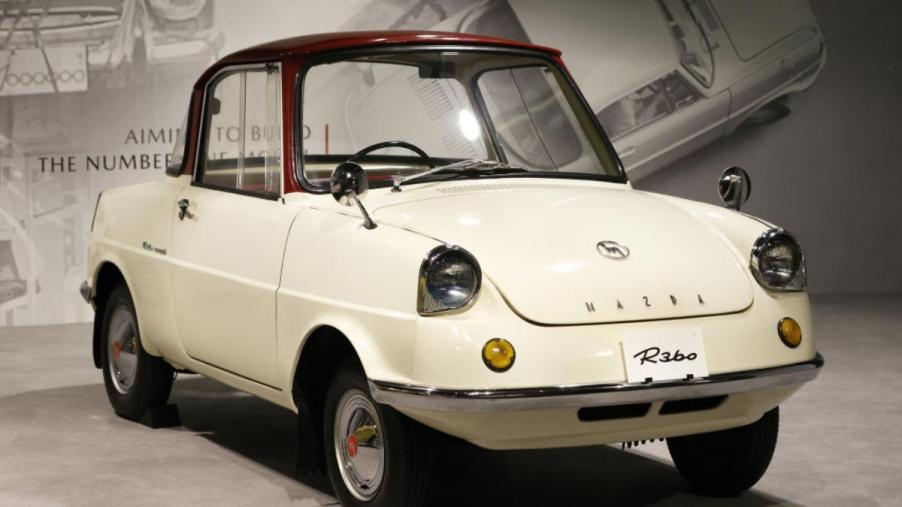
What Was the First Car Mazda Ever Made?
The Japanese automaker Mazda has a deep history that goes back further than manufacturing cars in the first place. For a company that began over a century ago as a cork factory, it has come astoundingly far since. And nothing changed the direction of the Mazda Motor Corporation the way their first car did.
It took some years to get to that point, though. Mazda created many vehicles in different categories before finally producing a car. That was the type of motor vehicle that ended up defining the company for decades after its launch.
The First Mazda vehicles were nearly all in one category
In recent years, Mazda has shifted focus away from its bread and butter, smaller cars, and turned its focus to affordable SUVs. The automaker has experience creating vehicles more in that vein, thanks to its long history of manufacturing trucks for military purposes.
It all started in 1931, when the company, then named Toyo Kogyo, launched the Mazda-Go. Britannica reports that this was technically a type of truck, but it looked more like a motorcycle fitted for commercial transport. The three-wheeled truck was marketed as an auto rickshaw, as contrasted to the human-powered simple rickshaws that were still common at the time.
These three-wheel trucks continued to be refreshed through 1938. After World War II ended, the company returned to civilian-focused production with a revised line. The Mazda T-2000 and the K360 lines replaced the original motorcycle-style Go with enclosed three-wheel trucks. This category made up nearly all of Mazda’s production until the 1960s.
How Mazda’s first car changed the direction of its business
Mazda had great success in the civilian commercial market by selling reliable, easy-to-repair trucks for local transport work. But that narrow focus started to limit their ability to keep growing after a period of market saturation. When the calendar rolled over to the 1960s, it was time for the now decades-old motor corporation to enter a totally new market.
But during a post-war economic boom, competition was stiff. How could Mazda possibly stick out with yet another small family vehicle? According to Mazda USA, going even smaller was the move. Their two-door R360 coupe was light, weighing just 838 pounds.
The rear-mounted 356 cc V-twin engine coupe initially offered a four gear manual transmission, which was quickly simplified into a two gear automatic model. This was popular, dominating the market in the “kei car” niche of small, lightweight vehicles. But this car was so squarely focused on Japanese consumers that there was little interest in attempting to sell it abroad.
How the first Mazdas came to the United States
Later in the ’19’60s, Mazda again sought a growth opportunity. Its three wheel trucks and coupes made a strong impression at home, but import interest wasn’t there. According to History.com, pressure from the Japanese government for Mazda to develop its own engine technology ended up providing the impetus to look into global markets for new concepts.
Mazda’s engineers found what they were looking for in the Wankel rotary engine. It was a wholly different concept from the usual piston-based engine, allowing for lighter, smaller designs with fewer parts. While rotary engines aren’t nearly as fuel- or heat-efficient, the positives were in line with Mazda’s interest in uncommonly light vehicles.
In 1967, Mazda committed to rotary engines across their entire lineup. That move led to major international interest, including in the United States. The first official import was the rotary-based 110S, internationally known as the Mazda Cosmo.
The timing was somewhat unfortunate, as in the ’19’70s, a fuel shortage led to a sharp drop in interest in gas-guzzling rotary engines. But Mazda kept at it, offering traditional engines alongside revised Wankel engines with better efficiency. Whenever market pressures push Mazda, the more than century old automaker always finds a new way to sell itself to customers around the world.


